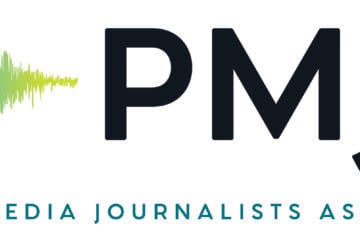With WMFE out, there’s a hole in PBS map
WMFE’s sale of its TV station in Orlando, Fla., leaves two smaller public stations reluctant to assume the role of big kid on the block.
Other PBS member stations in the state are now discussing how to provide the full PBS schedule to Orlando, the country’s 19th largest TV market, according to Rick Schneider, chair of the Florida Public Broadcasting Service and president of Miami’s WPBT.
 The Orlando area’s largest PBS station will become a new outlet for the Daystar Television religious broadcasting chain. The buyer is Community Educators of Orlando Inc., based in Texas and headed by Daystar chief exec Marcus Lamb and his wife, Joni Lamb. The nonprofit evangelical Christian broadcaster owns some 70 stations and runs programming on about 80 more.
The Orlando area’s largest PBS station will become a new outlet for the Daystar Television religious broadcasting chain. The buyer is Community Educators of Orlando Inc., based in Texas and headed by Daystar chief exec Marcus Lamb and his wife, Joni Lamb. The nonprofit evangelical Christian broadcaster owns some 70 stations and runs programming on about 80 more.
WMFE revealed April 1 that the station had been sold, after filing transfer papers with the FCC, but the buyer and the price, $3 million, were not known until the next week.
News of the sale took PBS by surprise. WMFE “informed us the day of the announcement,” PBS President Paula Kerger told Current. “I was aware they were having challenges, and we certainly had discussions about those challenges, but I didn’t believe they were going to leave.”
WMFE-TV will end its membership June 30, the last day of the PBS fiscal year, and pay off its dues balance of $600,000, said Jose Fajardo, president of the radio/TV licensee. If the FCC hasn’t okayed the license transfer by the end of June, WMFE will operate as an independent public TV station until the deal goes through.
The licensee will continue to operate its fiscally healthier radio station, WMFE-FM.
Like many other recent sales of public stations, the Orlando deal was brokered by Patrick Communications of Elkridge, Md. The company approached 23 entities, including three unidentified public broadcasting stations, according to Fajardo. Daystar was the only bite.
The purchased signal overlaps almost perfectly with those of two smaller state-college stations that air parts of the PBS schedule under the Program Differentiation Plan: WDSC in Daytona Beach and WBCC in Cocoa. So far, neither is volunteering to step up to primary to carry the full PBS schedule and assume the higher fees that PBS would charge.
Kerger and Schneider said it’s too early to predict how central Florida will get its public TV service. In Southern California, KOCE stepped up to primary and rebranded itself as PBS SoCal. It continues to talk with leaders of San Bernardino’s KVCR and the Los Angeles public school system’s KLCS about creating a consortium to share PBS programs (Current, Aug. 9, 2010).
“In Florida, there’s an opportunity to create something that might be a bit different,” Kerger said. “A lot of people recognize that it’s an interesting market, it’s quite diverse. I’m glad to see stations there really want to sit down together to sort it out.” The Florida stations, not PBS, will make the ultimate decision, she said.
TV couldn’t catch up
WMFE’s TV and radio stations have been on diverging trajectories for several years.
Corporate underwriting for TV fell from $400,000 in 2007 to around $100,000 this year. The exact opposite is true in radio, Fajardo said; those corporate dollars are steadily increasing.
TV’s fall 2010 pledge drive limped in with $170,000, $130,000 short of its $300,000 goal, while radio surpassed its $220,000 goal by $8,000.

Long before WMFE sold its Channel 24 to a religious broadcaster, staff member Jack Morgan created this stained glass window. Morgan is now production director at KLRN in San Antonio.
The pledge results are particularly serious for WMFE-TV because it relies on on-air support for 80 percent of its revenues. Fajardo said PBS pledge programming has been “a disappointment” of late. “In a pre-recession time, viewers were in a position to pay aggressive amounts in contributions in exchange for CDs or books or tickets,” he said. “That’s no longer the case.”
Meanwhile, WMFE-FM has been humming along. Listeners seem to have embraced the November 2009 format shift from classical to news/talk. While comparing ratings is difficult due to Arbitron’s shift from diaries to Portable People Meters, the numbers appear to be “very strong and growing,” especially during midday. The station even hired an additional reporter.
The TV operation, meanwhile, has been shrinking. WMFE weathered layoffs of10 staffers in October 2008 and 15 in February 2009. The remaining staffers had two-week furloughs last fall. Since the sale announcement, five are gone with eight more to follow.
Even with those savings, WMFE had to dip into cash reserves, Fajardo said. The board and senior staff began to fear for the sustainability of the entire operation.
Last year WMFE inquired about CPB’s Stations in Financial Distress assistance program, although it never officially filed for help.
Feeling of urgency
“We looked at where public broadcasting was going in the future, considered broadband and spectrum issues and the possibilities of local and state funding,” he said. Two bills pending in the Florida legislature call for cutting between 20 percent and 30 percent of state aid to pubcasting.
“We looked at alternatives,” Fajardo said, “merging with other stations, partnerships.” The last alternative was to sell the television operation and focus on the robust WMFE-FM. Nothing else would produce a sustainable cash flow, Fajardo said.
Former WMFE chief Stephen Steck, who hired Fajardo more than a decade ago, disagrees with the sale decision. Steck retired as station president in 2008, after 41 years there. When Steck met with Fajardo about two months ago, “Jose and the leadership of the board were very forthcoming with me about the sale,” Steck told Current. “But we agreed to disagree.”
Steck senses that WMFE’s management and board are rushing to make the deal and is disappointed that they didn’t consult with the community. “I think they just figured out that they didn’t want TV anymore,” he said, and quickly moved to sell the station “as ethically but opaquely as possible, and take the proceeds to pump up 90.7.” He added that Fajardo and the board “need to be respected for having an action plan, whether or not I or others agree — at least they have one. But the community needs to say either they applaud it, or it’s awful.”
Fajardo did indeed feel some urgency. He told Current that the TV license was dropping in value and WMFE wanted to sell before it declined further. Going public with the sale plan could have slowed the process, potentially affecting the value of the station, which already faced a tough sale in Orlando’s oversaturated media market.
Before the recession, Orlando had a vigorous economy. From 2000 to 2010 the area’s population shot up 28 percent, faster than the state as a whole, which saw a 17.5 percent increase. But the rapid growth didn’t give WMFE –TV a strong influx of new members.
The area’s tourism-based economy was especially hurt by the recession. “It’s a transitional place. People move here then move away,” Fajardo said. “They have ties to other communities. It takes a lot of time for families to grow roots before they start giving to any nonprofit.”
Population accounts for some 30 percent of a station’s total National Program Service Assessment under the current PBS formula. Fajardo said while most stations’ PBS dues were flat for the past several years, WMFE’s continued to increase as the number of area residents grew. The station’s PBS assessment for fiscal year 2011 is $987,000, up $37,000 over FY10. And that’s up almost 50 percent from its 2001 fees of $666,000.
A new dues equation, just proposed by the PBS Board and now awaiting stations’ reactions, would give population a 25 percent weight. Fajardo first read about the proposal as he flew to Washington, D.C., April 5 to talk with PBS leaders about WMFE’s departure from public TV. He thinks the new dues formula is fair, especially because it caps the annual growth at 6 percent in the first year. “But the issue for us is, WMFE cannot sustain any increase — period,” he said.
Orlando’s destiny
Daystar paid a lower-than-average $2.20 per TV household in the Orlando market, said Erik Langner of Public Radio Capital, which brokers radio and TV station deals for pubcasters. The national average price for noncom stations over the past decade has been around $2.44 per household since the recession hit, down from the earlier average of $3.25/HH.
The noncom TV marketplace is a small one: From January 2001 through June 2010, only 12 station sales were recorded.
Details of the sale are still being worked out. Fajardo said the station is investigating its options for disposal of federally funded equipment; it has 18 months remaining on a federal lien on one piece funded by NTIA. The building is not part of the sale, as WMFE-FM will remain in operation.
CPB spokesperson Nicole Mezlo said the corporation is in early discussions with WMFE over sale details. Generally speaking, a Community Service Grant requires a licensee to provide a public broadcasting service. In the event of a sale or if a station goes dark, she said, the station may have to return all or part of its 2011 CSG, which was $560,146.
The two smaller stations serving Orlando and the Atlantic coast appear hesitant to take over as the area’s primary PBS station. WDSC in Daytona Beach, the larger of the two, would seem the stronger candidate, but it’s in the midst of management changes at both the station and its licensee, Daytona State College.
General Manager Bruce Dunn, a longtime pubcaster, is departing after 15 years; Robert Williams, head of the college’s economic development department, takes over in July. The college has yet to appoint a new president after trustees forced the previous president’s retirement late last year.
The local News-Journal reported that interim college president Frank Lombardo said the station “won’t take on any additional responsibility” until it hears whether it will also get more money from either PBS, the state or CPB for becoming the primary.
Down the coast at Cocoa, Fla., WBCC would have to stretch even farther to become the area’s primary PBS outlet; it only began carrying PBS programs in 2002. Jim Drake, president of the licensee Brevard Community College, said in a statement that the college is “investigating the impact of WMFE’s sale on the college and the community, however, it is too early to know the full effect.”
Fajardo had a conference call with other Florida Public Broadcasting stations following the announcement. He pledged assistance to make any transition as smooth as possible. He also has released the two partial-schedule PBS stations from restrictions of PBS’s Program Differentiation Plan, freeing them to use more of the PBS national schedule.
Schneider said the other Florida stations continue to discuss Orlando’s future. Ideas are emerging. One option would be a college licensee running a primary PBS station in collaboration with several established PBS affiliates.
Kerger said PBS stands willing to help, but the ultimate decision will come from the stations. “I take it seriously when any station decides it wants to move away from PBS,” she said. “We’re trying to talk to a lot of stations on an ongoing basis, looking carefully at those that are having economic issues. For stations that are talking about collaborative work, we are looking for ways to be supportive of that.”
“My hope is,” she added, “that as all stations look at the possibilities, they really see an opportunity and not just a challenge — an opportunity to shape our destiny.”
EARLIER STORIES
PBS rejiggers the balance between full-time and part-time PBS member stations in a market, April 2009, but the resuls are still unfavorable, some big stations contend,.
Los Angeles-area stations, CPB and consultant like plan to reshape the regional public TV market, August 2010.
Orlando’s overlapped WMFE opts to sell channel, exit public TV, April 2011.






